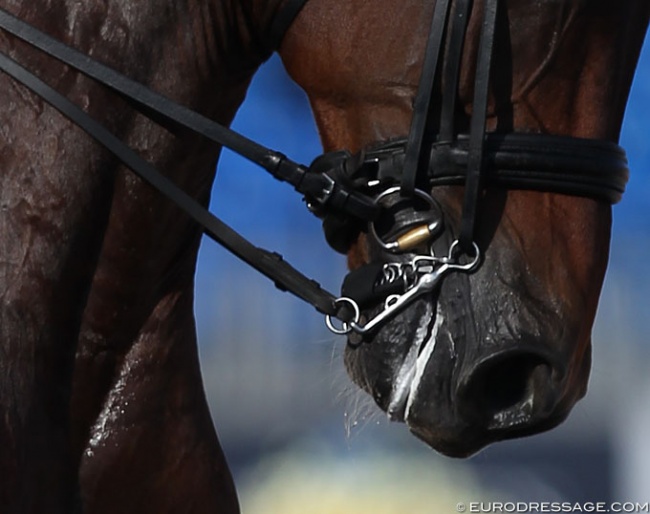
What does contact tell us? Recently we have been discussing the ideal amount of weight to have in the reins. Looking at it in reverse we can ask what does the amount of weight in the reins, or the weight in each rein, tell us? What information can we take from feeling the amount of tension in the left or right reins? What is happening when I lose the contact on the left rein? What is my horse doing that creates this imbalance?
My young horse tends to avoid putting weight in the left rein. It’s hard for me riding him to get an elastic connection on the left rein regardless of whether I am going to the left or the right.
Do you have one rein that is harder to establish a connection on? We read a lot about the importance of the outside rein, but depending on the horse and his tendencies it may be that there is one rein he avoids on both sides.
Why?
Again it comes back to Hilary Clayton’s comment: "the asymmetries we perceive in rein contact actually originate elsewhere in the horse’s body rather than the jaw and this is why the trainer must work on the entire body of the horse in order to achieve an even contact in both reins. It confirms the importance of a back to front approach to training rather than trying to ‘fix’ the contact in isolation.”
My coach told me today that “Iota doesn’t want to step up with the right hind, so when he steps short in the right hind you feel it as a lack of connection in the left rein. And alternatively, you will know when he is stepping up well on the right hind when you feel the connection on the left rein, regardless of which way you are going."
It’s interesting that we often read about the outside rein, when often the horse has a tendency that remains constant on both reins. With my young horse he puts weight in the right shoulder and places more rein tension in the right rein, avoiding a connection on the left rein and stepping short with his right hind leg.
Many riders might try and address this issue by thinking “I need more connection on the left rein so I will take more with that rein.” Of course what this does is exacerbate the situation and the horse falls out more through the right shoulder and continues to step short with the right hind.
What the rider should do instead is encourage the hind leg of the horse to step up and under by first controlling the shoulder, and then when the horse is straight, gain the horses confidence in the rein he is avoiding by keeping the hand very soft and steady.
“When Iota moves his weight off the right shoulder he can step up nicely with his right hind leg, this will then allow his energy to flow forward and you will feel the weight come into the left rein (the rein tension will become even in the left and right rein). It’s important at that moment that you keep that left rein steady and soft so he gets confident staying in the good balance,” said my trainer.
It’s the placement of the hind legs under the centre of gravity of the horse that creates balance, engagement, and as a consequence an even and elastic contact.
by Sarah Warne - Photo © Astrid Appels
Related Links
Classical Training: How Much Weight Should We Have in the Reins? An Addition
Classical Training: How Much Weight Should We Have in the Reins?